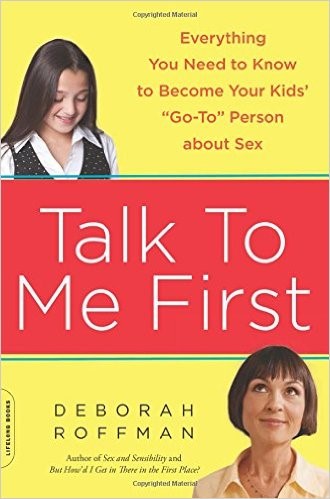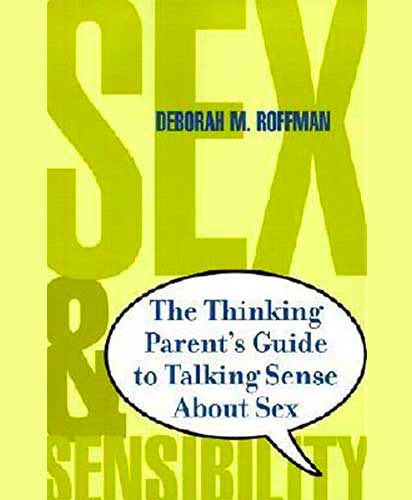What Is Abstinence?
This video explains what abstinence is and why a person would choose to abstain from engaging in sexual behaviors. The video acknowledges that practicing abstinence is a personal choice some people may make for a range of reasons, including spiritual reasons, because they are not ready for sex or because they want to focus on a priority, like school or an extra-curricular activity. The video also offers an example of what practicing abstinence looks like in a romantic relationship. [AMZ-115]
Youth
A person is practicing abstinence when they choose not to do something, including but not limited to having sex. All types of people may choose to practice abstinence or be abstinent at different times in their lives, for different amounts of time, and for many different reasons. Many people practice abstinence to uphold their religious or spiritual beliefs. Other people might do it so they can focus on other things that are important to them, like school or after-school activities. Some people practice abstinence because they are waiting for the right person to have sex with. There is no good or bad reason why a person might choose to be abstinent, and it is important to make the decision that feels most appropriate for you.
Abstinence can look like different things to different people. Some people practice it by avoiding any type of sex that puts them at risk for an unintended pregnancy or sexually transmitted disease (STD)—activities like vaginal, anal and oral sex. Other people may practice abstinence by not having vaginal sex, while still being willing to have oral sex. This type of abstinence can protect a person from unintended pregnancy, but it doesn’t protect them from sexually transmitted diseases (STDs).
You can be in a relationship and practice abstinence. If that’s something you’d like to do, talk with your partner to make sure you are both on the same page about what that looks like. If you’ve been sexually active in a relationship and want to become abstinent, you can do that too. It’s OK to change your mind!
Choosing to be sexually abstinent is a personal choice that should be respected and validated. No one is better or worse for being sexually abstinent. At the end of the day, what’s most important is for people to make the choice that’s best for them.
FAQs
For many young people, abstinence can be a great way to avoid some of the physical and emotional challenges related to engaging in sexual behaviors, including sexually transmitted diseases, unintended pregnancy and emotional disappointment when expectations about sex aren’t met. Practicing abstinence can also help you build a relationship with your partner that isn’t solely focused on sexual behaviors. While there are many benefits to practicing abstinence, each person gets to choose what is best for them. The best way is to choose what’s right for you is to consider what’s most important to you and your overall health and well-being. Talking with a parent, caregiver or trusted adult for advice and support can help.
Having a positive conversation about abstinence can be like any other conversation you have with a partner, where you are both practicing openness, honesty and assertive communication. If you are interested in practicing abstinence, share your thoughts and desires with your partner, and then allow them space to share their feelings in return. If your partner is interested in being abstinent, listen to them, ask questions, and respond with your questions and thoughts without judging or shaming. Just like you shouldn’t pressure someone to have sex, don’t pressure your partner not to have sex. When you have a conversation, it is always possible that you and your partner may not want the same things. That’s OK. Know that if you want to be abstinent and your partner does not, a romantic relationship may not possible between the two of you. For additional ideas on how to have the conversation, reach out to a caregiver or other trusted adult.
Parents
For parents and caregivers, abstinence can feel like one of the easiest topics to discuss with young people. That said, it is important to have a full understanding of what abstinence is and what it means to practice it, so that conversations with young people are clear and understood by everyone involved.
Abstinence is the act of refraining from doing a certain behavior, including but not limited to sexual activity. People of all ages and walks of life may practice abstinence at different times of their lives, for different amounts of time, and for various reasons. Many people practice abstinence to uphold their religious or spiritual beliefs. Other people might practice abstinence so they can focus on school or extra-curricular activities. Some people may practice abstinence because they are waiting for the right partner to become sexually involved with. There is no good or bad reason why a person might practice abstinence, and it is important that young people feel empowered to make and stick to the decision that feels most appropriate for them.
Many people practice abstinence by refraining from any type of sexual intercourse that puts them at risk for an unintended pregnancy or sexually transmitted disease (STD)—including vaginal, anal and oral sex. Not everyone thinks of abstinence this way, however. For example, some people believe they are still practicing abstinence if they avoid vaginal sex, but still engage in oral sex. While this does count as a type of abstinence, oral sex can still put a young person at risk for STDs, especially if it’s unprotected. Parents and caregivers who encourage their young people to practice abstinence should be clear throughout the conversation to specify what sexual behaviors they are referring to and to entertain questions to gauge young people’s understanding.
While some parents and caregivers may feel a vested interest in their children being sexually abstinent, choosing to practice it is, ultimately, a personal choice that should be respected and validated. Whether or not a young person chooses to be sexually abstinent, they should not be judged or shamed for their choices. No one is better or worse for being sexually abstinent. It is important to encourage young people to make informed decisions that are right for them. It is also especially important that parents and caregivers communicate that whatever choice young people make they can come to their parents or caregivers if they ever have questions or need support.
CONVERSATION STARTERS
When parents and caregivers engage in loving and supportive conversations with children about sexuality, it allows children to practice safe and healthy habits as they grow up. Bringing up abstinence as a topic can be a useful way to let your child know that you are available to answer questions or provide support, should they decide to become sexually active. In some cases, children may come to you for assistance before you have these conversations. Be open to hearing what they have to say, and provide them the support and resources they need to effectively take care of themselves.
Below are some ways to engage in conversations with young people about abstinence:
Practicing abstinence has many benefits for young people. That said, promoting these benefits as moral could be harmful to young people, particularly those who have experienced, are experiencing or will experience sexual assault or abuse. While it is normal and OK to encourage children to practice abstinence, be clear that they will not be judged as “bad,” “dirty” or “wrong” or shamed if they do not uphold that. In addition, make it clear to children that they are not at fault for sexual assault and abuse, including any non-consensual sexual encounters they experience, and that those experiences do not have to change what being abstinent means to them.
It can be very difficult, in some cases, for young people to practice abstinence, particularly if they feel pressure to have sex from others, or feel authentic sexual urges themselves. Be honest with young people and validate the challenges they may be facing, working strategically with them to identify how to address their challenges in ways that maintain wellness and minimize unintended adverse outcomes.
Educators
As a teacher who wishes to avoid the impression of “promoting” sexual behavior, abstinence can feel like an easy sex education topic to get behind. That said, it is important to have a full understanding of what abstinence is, and what it means to practice it, so that lessons with young people are clear and understood by everyone involved.
Abstinence is the act of refraining from doing a certain behavior, including but not limited to sexual activity. People of all ages and walks of life may practice abstinence at different times of their lives, for different amounts of time, and for various reasons. Many people practice abstinence to uphold their religious or spiritual beliefs. Other people might practice abstinence so they can focus on school or extra-curricular activities. Some people may wait for the right partner to become sexually involved with. There is no good or bad reason why a person might practice abstinence, and it is important that young people feel empowered to make and stick to the decision that feels most appropriate for them.
Many people practice abstinence by refraining from any type of sexual intercourse that puts them at risk for an unintended pregnancy or STD—including vaginal, anal and oral sex. Not everyone thinks of abstinence this way, however—including young people. For example, some people believe they are still practicing abstinence if they avoid vaginal sex, but still engage in oral sex. While this does count as a type of abstinence, oral sex can still put a young person at risk for STDs, especially if it’s unprotected. Teachers would do well in the sex ed classroom to explore various definitions of abstinence with their students, entertaining questions from them that help gauge understanding.
Many of your students may be in relationships, and may not be sure how to navigate abstinence in that context. You can make it clear to students that young people can be in a relationship and still practice abstinence, and that no one is required to engage in sexual behavior just because of their relationship status. Young people who are in relationships with each other and want to practice abstinence should make sure they communicate with their partner what abstinence means to them. They can then make sure they are on the same page with their partner about what practicing abstinence looks like. Practicing sexual abstinence does not mean that a person does not enjoy other forms of affection. If they are still interested, they may engage in masturbation, or they may cuddle or kiss with a partner. Additionally, even if they have already had sex, a person can choose to change their mind and become abstinent, whether or not their partner wishes to do the same.
While educators and other caring adults may feel a vested interest in children being sexually abstinent, choosing to practice it is, ultimately, a personal choice that should be respected and validated. Whether or not a young person chooses to be sexually abstinent, they should not be judged or shamed for their choices. No one is better or worse for being sexually abstinent. what’s most important is to encourage young people to make an informed choice that is best for them.
International Technical Guidance on Sexuality Education
- What is abstinence?
- According to the video, what are some reasons why a person might choose to practice abstinence?
- If someone wanted to practice abstinence to avoid an unintended pregnancy or sexually transmitted disease, what specific behaviors would you suggest that person avoid?
- What would you say to a peer or friend who wasn’t interested in practicing abstinence?

